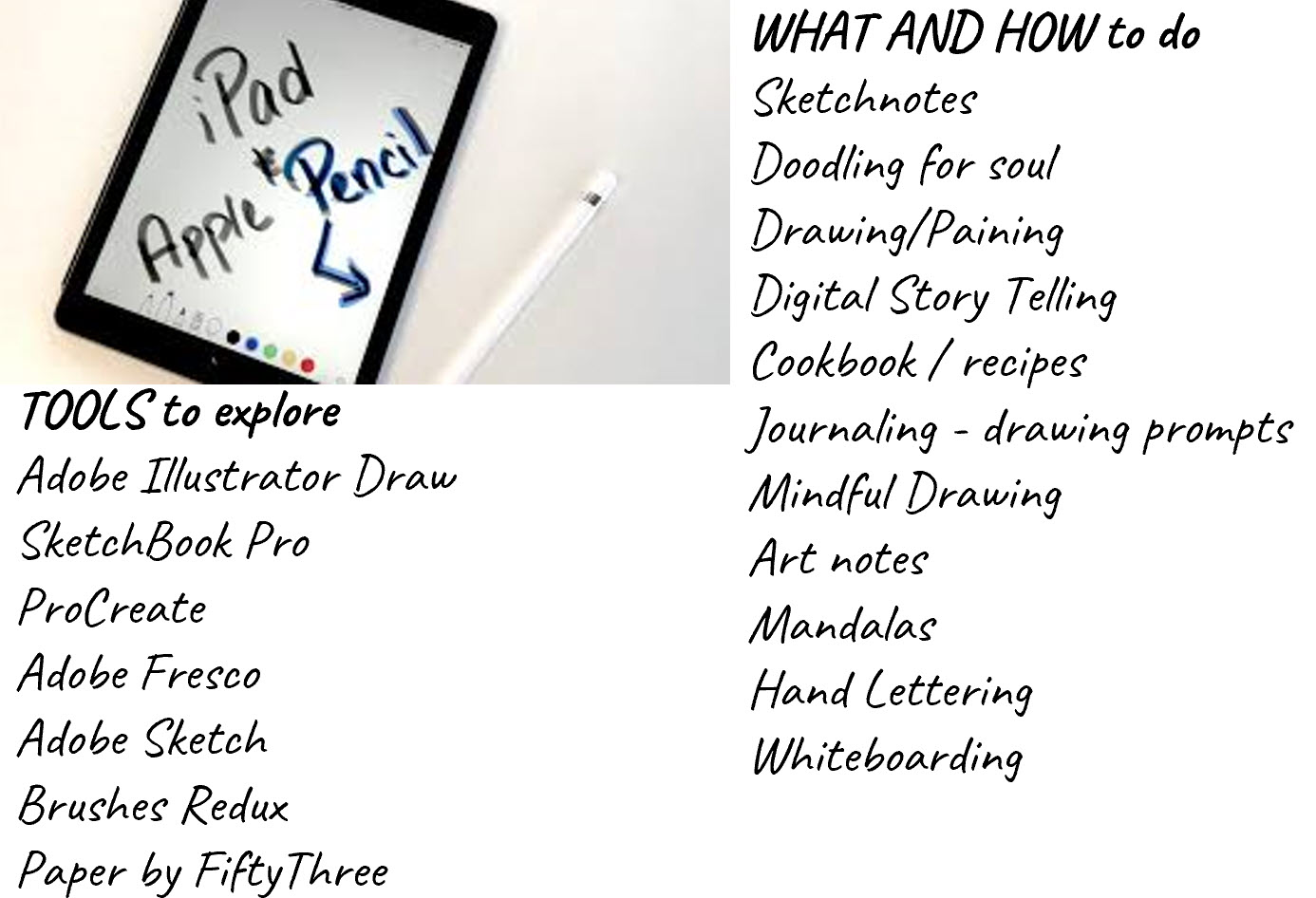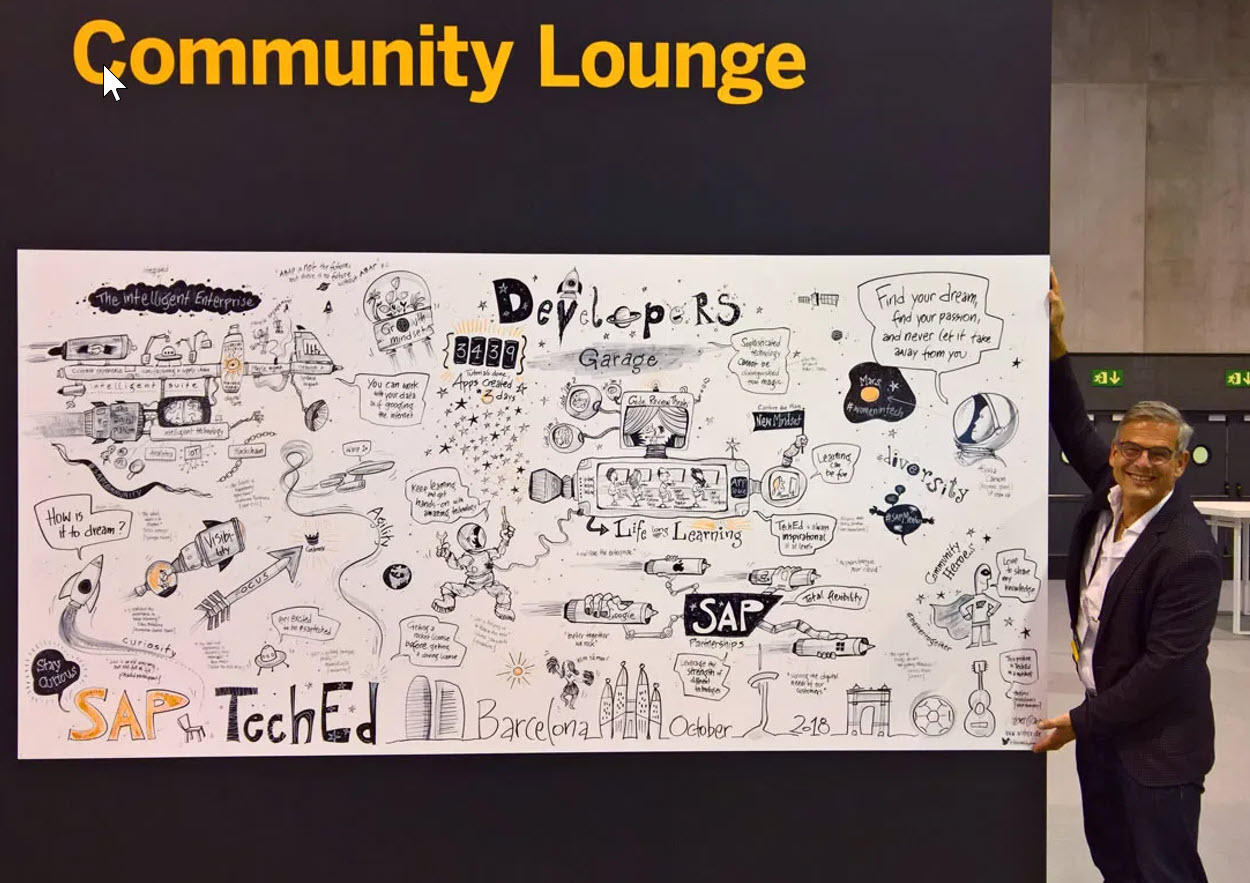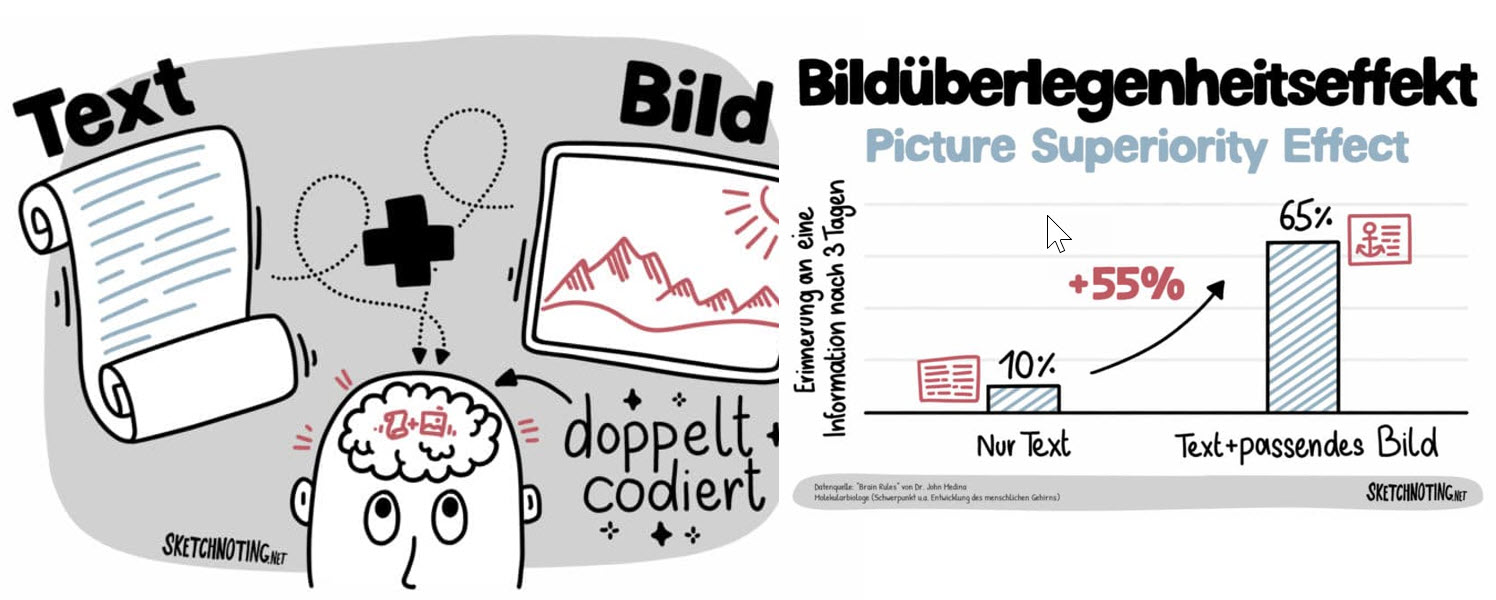
- SAP Community
- Groups
- Interest Groups
- Welcome Corner
- Blog Posts
- My (re-)discovered Talent - the artist inside
- Subscribe to RSS Feed
- Mark as New
- Mark as Read
- Bookmark
- Subscribe
- Printer Friendly Page
- Report Inappropriate Content
That brought this saying from Pablo Picasso to my mind:

Today I'd like to tell a story about me and my relationship to art. A story about a talent that was lost for OVER 20 years, and how I re-discovered it in January, due to Covid and my own sickness.
I hope that you are taking something away... Enjoy the story.
::::::::::::::::::::::::::::
Last Year December I got an emergency surgery and needed to stay at hospital for a long time. When I felt better, I was sent home, where I started to get bored. No visits, no walks (as I was not able to walk), too unconcentrated for reading, and even watching TV started to get boring. My favorite hobby is cooking, but at that point I was not able to stand in the kitchen. I really needed a hobby, but something I could do while I was sitting, or I was laying in bed. So what’s left? Knitting, macramé, to crochet? Boring!
So I tried to remember what I really loved to do before I started to be an employee… DRAWING WAS THE ANSWER.
I’d like to invite you to a journey into my past, to explain why this talent was lost for such a long time.
The Past
This is me - On the left you see me at the age of 5. And on the right side you can see one of my first pieces of art: Me working in a circus. (Remark: My dream didn't come true, but I am working at SAP, which is almost as fun as working in circus).

Me and Me working in the circus
My mom was a chef and my parents owned a Restaurant. They were working all day, evening and weekends. When I came from school, they were not able to spend much time with me, so I needed to entertain myself. I was sitting at the “Stammtisch” with pencil and paper.
My pictures were taking me everywhere in my phantasy, and they were also a kind of ice breaker for communicating with adults. I was drawing together with and for the restaurant guests that were coming and leaving.
I loved to draw houses as you see in the left picture below. On the right side, you can see my Grandma's house [Title of the art piece "Oma has a heart attack in her garden"]

Our house and Oma's house
The next step of my career was set: a 3 year apprenticeship as architectural draftswoman in an Architect Office. After that, I went another year to a school for design and visual communication. During and until the end of my studies I worked as a freelance commercial artist, and went then to University to finally study architectural engineering where I graduated.
Look how my drawings changed. I was still using paper and pencil, but worked a lot with CAD software.


Beside technical drawing I was also doing a lot of sketching exercises during my studies.


And now the bad turn: I lost interest in drawing and sketching because I HAD to do it every day and night. There was a lot pressure, and rating from professors was not always fair.
Especially as an architect you are depending on so many rules and regulations. I ended up with a kind of „creative burnout“.

Photo Credits to Wes Peck https://www.flickr.com/people/wespeck/
For years I was not even able to use a scissor or a pen to craft a christmas card together with my little son. It was really a trauma. Anyways - After my Master, I started right away with SAP where I already worked as a student. No arts anymore.
The Present
So here I am / Back to present. At SAP. And that incident that came in December, I was telling you about in the beginning. I wanted to use the time of my sick leave to learn something new. But I was kind of limited (laying on the couch etc)
I usually used my iPad for taking notes, writing emails etc. I heard that you can do cool things with the ipad, so I explored different tools and apps, I tried out a several techniques and different styles. I went through a transformation the last 4 months. My body, my soul, my thinking, and finally my creativity.
I decided to pay more attention to something that is called sketchnotes, as I thought it would be cool to learn something that would be beneficial for my job.

So here are the tools I explored and what I tried out
Sketchnotes
I had my first contact at SAP inside Track 4 years ago. Later, this technique was so established that it was even presented at SAP TechEd, and a lot of whiteboarding Videos were produced by SAP.

Here you see Dr. Wolfgang Irber creating a visual story at SAP TechEd Barcelona
Mike Rohde, the author of The Sketchnote Handbook, says simply that “Sketchnotes are rich visual notes created from a mix of handwriting, drawings, hand-drawn typography, shapes, and visual elements like arrows, boxes, and lines.”
The value of sketchnoting is supported by several theories, such as the dual coding theory that says that text is stored in one half and visual in other half of the brain. And the picture superiority effect, where that they found out, the combination of both visuals and texts is up to 55% more effective than just text.

credits to sketchnoting.net
Benefits:
- Use visual cues to boost memory retention
- Keep our brain active and engaged with variety and stimulation
- Develop ideas more comprehensively by creating connections between points
- Use it to create presentations that rock
Yeah – I wanted to learn that!
But where to start? There are many courses online and YouTube Tutorials. I joined some facebook groups that really helped me and gave feedback to my first sketchnotes.

Starting a sketchnote dictionary
What’s nice about sketchnoting is, that it’s not a strict format. It doesn’t say you have to take notes this or that way. Instead, it presents you with a variety of tools for you to choose from, and create your own customized note-taking process, one that works well with your learning style and your personality.
See picture below:
- Left Side of example: For those who prefer working with words, you might stick mostly to that, but maybe bring in some diagrams here and there to help you organize those words. (these are notes from a course I took)
- Right side of example: For the doodlers out there, your notes might be heavy on the sketches.

2 ways of sketchnotes
When I started, my notes and my handwriting on ipad was horrible. I needed to get used to the tool, the functions, the brushes, and the slippery surface. I learned that I should not limit myself with perfectionism. Just practising doodling was helping a lot.
Here some examples how my first sketchnotes looked like. Please don't laugh, I was trying to work on my hospital trauma.
Hand Lettering is important too. How does your handwriting look like? The issue is, that we nowadays are not writing with our hands, only with a computer keyboard. On the right side I was practising for a birthday card.

my first sketch notes
But I was at home, and I did not have meetings, and nothing to note --- so what to sketchnote?
As you might know, my other passion is cooking and creating recipes - so I had the idea crossing this with making art. The idea of illustrating my recipes was born.
Look how I wrote down a recipe before… boring right?

boring recipe
And this is what I developed:
Recipe Cards with Sketchnotes
I was annoyed that you have on top of a classic recipe the list with ingredients and then a long text with the instructions. I wanted to create something that is easy to use while cooking and fun to read. An illustrated recipe can portray lots of things that a text and a photo cannot. It can evoke memories and tell a story. It can be funny, sweet, silly, pretty. It can connect us to different cultures and introduce us to new flavor. These recipe cards are international and even for kids easy to understand.
I am developing my skills with every recipe, as I am exploring how to draw a variety of objects, shapes, textures, lettering, and more. I even developed a new keyboard font made out of my own handwriting. Writing and sketching a recipe has a lot to do with process thinking. I usually start with a very rough layout sketch, like a storyboard. Then I work my way through illustrating each of the ingredients and foods. I do a google image search for each ingredient to pull up reference photos as I work.

Depending on my time and interest in detail, I sometimes spend some more time with details (below the cans and Harissa) but sometimes I keep it high level (below the eggs, and goat cheese).
But overall you see I am going more and more away from the rudimental sketchnoting and the pieces become more detailed.

This recipe is from my colleagues Moshe Naveh
BTW: Credits of the Shakshuka recipe goes to moshe.naveh2
My plan is to illustrate some more recipes, and have my own cookbook with favorite recipes. The nicest ones I will hang up as unique piece of artwork in my kitchen...Yeah - christmas presents are set.
Here is another example of food illustration - but you see I was going more and more away from sketchnoting.

When I don't want to think about food, and I don’t want to draw food, I illustrate other things like nature, and use drawing on Ipad as meditation.
Meditative drawing
Thi is a visual technique for training attention and awareness, putting the mind in a calm and stable state, and exercising your creative muscle.


This step of Mindful drawing iswas leading me to my next art experience:
Journaling
Since a couple of weeks I am using hand lettering, sketchnotes and meditative drawing, all together in my bullet journal, short "Bujo".
Below you can see a sample picture, that is not from my actual BuJo, as that is my private place to express my deepest self, without fear of criticism or ridicule.
In my journal I am keeping a log of activities, personal experiences, events and emotions, as a technique for reducing stress and to develop self awareness through inner exploration.
Journaling allows me to clarify my thoughts and feelings, improves my memory, problem-solving abilities, self-discipline and willpower. Willpower is like a muscle: the more we use it, the stronger it gets.
Journaling helps me to find out about the things that trigger negative feelings or behaviors, such as anxiety.
I do spend every morning and every evening some time to plan and to reflect my day, but also using "Art Journal Prompts", where I doodle around a specific topic or question of my life.

Example for Journaling
Here you can learn more about Journaling https://journalsmarter.com/
And here a cool page to geht art promts: https://artfulhaven.com/art-journal-prompts/
Summary
- If you are interested to learn more, just use the Google-Search for „Sketchnotes“ or „Whiteboarding“. Many Tutorials are available on YouTube.
- Open SAP Course is highly recommended: https://open.sap.com/courses/bvis1-8,
- Tools: Meanwhile my fav. Tools are Procreate for the creative part (and to export graphics to PPT), Goodnotes for taking your notes to the next level, and Zinnia for journaling. I‘ve tried out many others, but these are the ones that support the functionalities best that I need, but this does not mean that they would fit for you.

My favourite tools
I have some activities for you
- Instead of taking classic notes during a meeting: sketchnote.
It doesn’t matter whether you call it sketch noting or “doodling” or “scribbling” „graphic recording“, „visual notes“, „visual notetaking“ or simply “adding some joy” to your notes.
Just aim for something visual that takes your notes to the next level. - Doodling during a meeting is absolutely okay.
That sort of aimless, spontaneous sketching or drawing using whatever paper and writing implement you have handy. I didn’t expect to see doodling as a recommended technique for getting through meetings, but indeed it is.
Doodling can actually help you focus and make it easier to listen. It can relieve stress and improve productivity. It can also help in memory retention; doodle a number or word or image that pertains to what’s being addressed and it’s more likely to stay with you. And there’s no such thing as a mistake; they are your doodles, and whatever you create is just right. (Tipp: Let other people know about your passion, so that they don't think you are not paying attention) - Think about starting a Bullet Journal, write about how you feel, then paint or doodle around it.
And now go and start drawing!
As I said there are so many tutorials out there. If you are interested in more info I would be more than happy to help you or even do a session with you. Just send me a Direct Message.
HAPPY SKETCHING
- SAP Managed Tags:
- SAP Community
You must be a registered user to add a comment. If you've already registered, sign in. Otherwise, register and sign in.
| User | Count |
|---|---|
| 8 | |
| 4 | |
| 3 | |
| 2 | |
| 2 | |
| 2 | |
| 2 | |
| 2 | |
| 2 | |
| 1 |